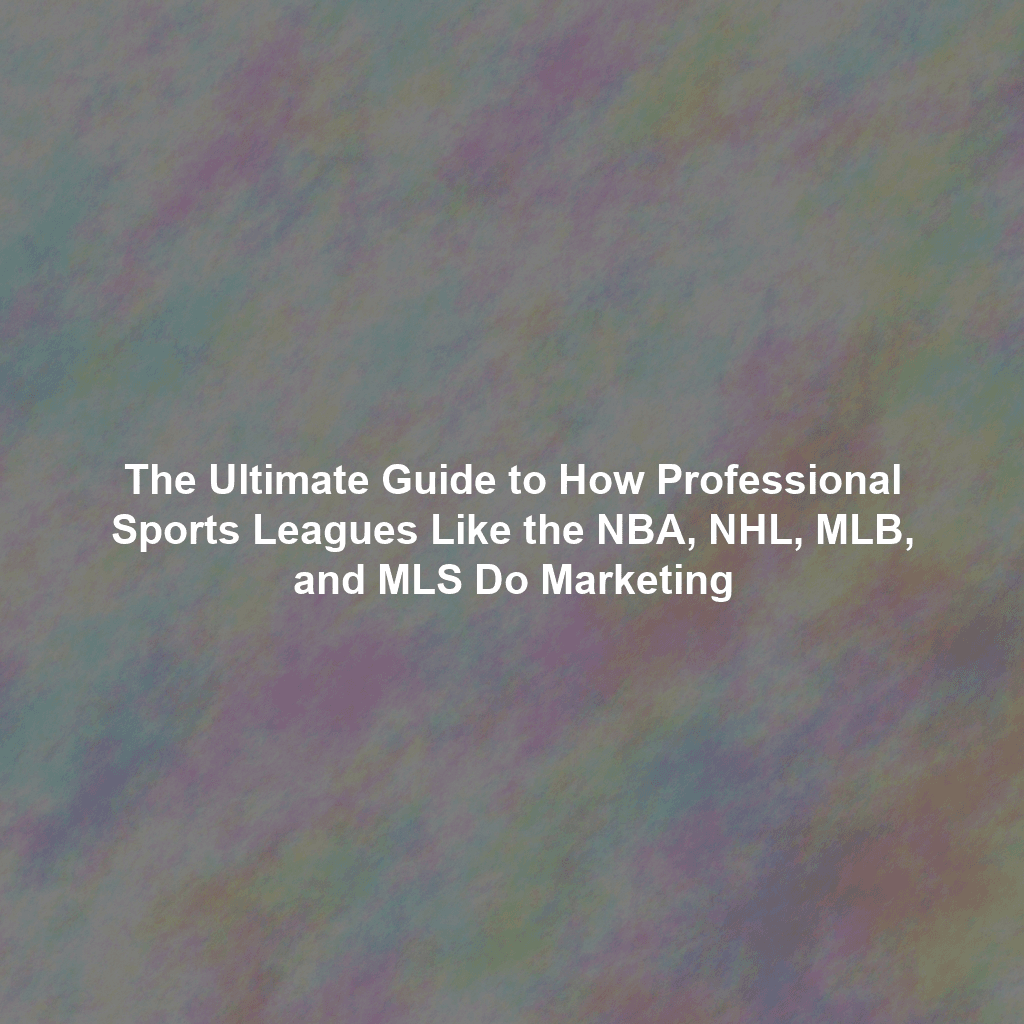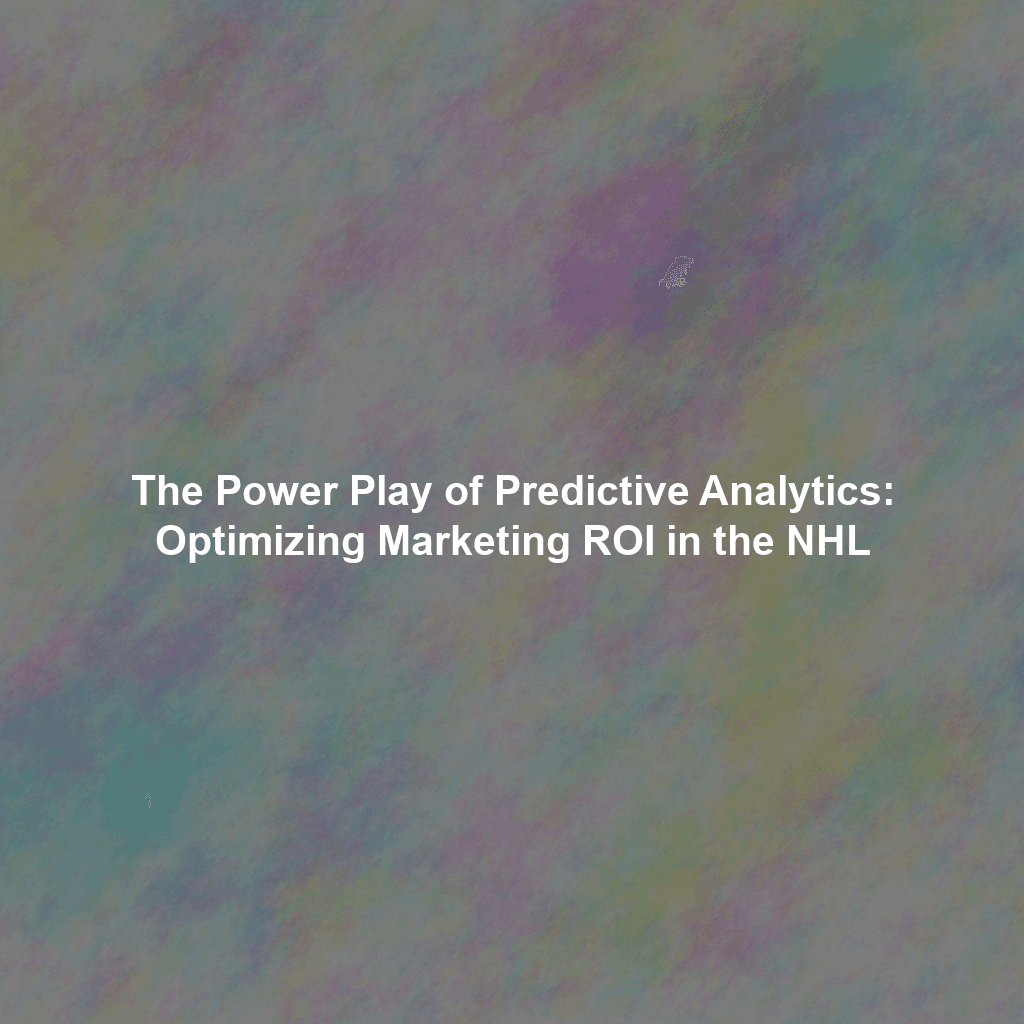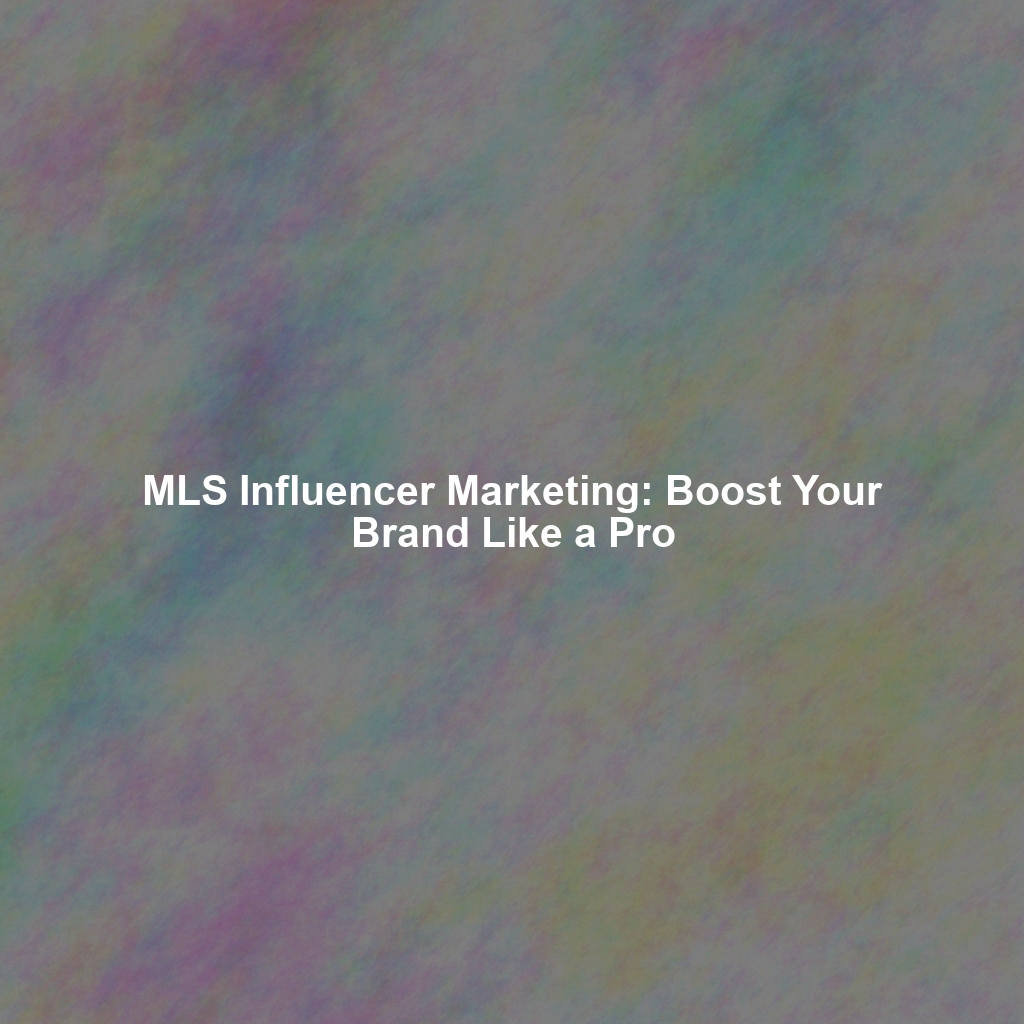Professional sports leagues have become global powerhouses not just through athletic excellence, but also through masterful marketing. Whether it’s the NBA captivating fans in China, MLB’s storytelling on Opening Day, or the NHL’s Winter Classic spectacle, the way these leagues market themselves plays a vital role in their continued dominance and growth. This comprehensive guide explores the marketing strategies of major North American sports leagues like the NBA, NHL, MLB, and MLS, dissecting the tactics that help them drive fan engagement, sponsorship revenue, brand loyalty, and international growth.
Table of Contents
- Branding and Identity
- Fan Engagement
- Digital Marketing and Social Media
- Content Ecosystems
- Global Expansion
- Sponsorship and Partnerships
- Data-Driven Marketing
- Future Trends in Sports Marketing
Branding and Identity
Crafting Iconic Brands
Each league has built a powerful brand with specific core values. The NBA focuses on individuality and cultural relevance, often aligning with hip-hop and fashion. MLB is steeped in tradition and nostalgia, while the NHL leans into toughness, grit, and regional identity. MLS positions itself as young, fast-growing, and globally connected.
Visual Branding and Consistency
Logos, color schemes, and jersey designs are carefully curated and managed to maintain consistency across all platforms. Leagues often run rebranding campaigns to modernize their image and engage new audiences—like the NHL’s logo evolution or MLS’s 2015 shield rebrand that reflected its new growth ambitions.
Fan Engagement
Community Building
Leagues understand that loyalty begins at the grassroots level. The NBA’s “NBA Cares” and MLB’s youth development programs are investments in long-term fandom. The NHL engages kids through “Learn to Play” programs, and MLS hosts community soccer initiatives in urban areas.
Gamification and Interactive Experiences
Second screens, fantasy leagues, bracket challenges, and real-time mobile apps engage fans beyond the arena. The NBA Fantasy and NHL’s Bracket Challenge are examples of driving engagement through competition.
Personalized Communication
Modern CRMs and AI tools help leagues deliver personalized experiences—from targeted emails to custom in-app messages based on fan behavior and location.
Digital Marketing and Social Media
Omnipresence on Social Platforms
Social media has become a battleground for attention. The NBA dominates TikTok and Instagram with behind-the-scenes content, memes, and player highlights. MLB uses Twitter and YouTube for classic moments and analytics-driven stories, while the NHL uses Facebook and Instagram to connect with die-hard fans.
Influencer Collaborations
Leagues increasingly partner with athletes, creators, and celebrities to promote events and merchandise. MLS works with local influencers in key markets to build regional appeal. NBA players are often influencers themselves, promoting both league and personal brands.
Streaming and OTT Content
Direct-to-consumer platforms like NBA League Pass and NHL.tv reflect a shift toward streaming. These services offer a subscription-based model, increasing revenue and deepening fan loyalty.
Content Ecosystems
Owned Media Channels
Leagues invest heavily in creating their own digital platforms—apps, websites, newsletters, and podcasts. MLB’s newsroom and the NHL’s highlight-focused content deliver continuous engagement.
Documentaries and Behind-the-Scenes
All-access shows like “Hard Knocks” (NFL), “Drive to Survive” (F1), and the NBA’s YouTube series help humanize athletes and make fans feel part of the journey. These increase emotional connection and long-term engagement.
Event-Based Marketing
Major events—All-Star Weekends, Drafts, Playoffs—are content goldmines. The NBA All-Star Weekend is a social media phenomenon. The MLB’s Field of Dreams game generated massive media buzz through a mix of nostalgia and cinematic production.
Global Expansion
Localized Content Strategies
Leagues tailor content by language, culture, and time zone. The NBA leads here with a strong presence in China, India, and Africa, often running separate localized social accounts and broadcasts. MLS recently announced partnerships to grow presence in Mexico and Central America.
International Games
Playing games overseas—like MLB in London, NHL in Finland, and NBA in Abu Dhabi—builds brand awareness and fandom. These are supported by intensive local marketing campaigns and media coverage.
Sponsorship and Partnerships
Strategic Brand Alliances
Top-tier leagues partner with top-tier brands. The NHL has deals with Adidas, Apple, and SAP. The NBA works with Nike, Beats, and PepsiCo. These partnerships often go beyond logo placement, involving co-branded content, social media integration, and technology innovation.
In-Arena Advertising Innovation
From LED boards to augmented reality, in-arena branding is evolving fast. MLB ballparks use dynamic digital signage, and the NHL overlays digital ads on glass boards for TV viewers—a practice expected to grow.
Emerging Partnerships
Crypto, NFTs, and AI companies are forming new classes of sponsorship. Though volatile, these tech-forward alliances appeal to younger demographics and provide leagues with digital-native reach.
Data-Driven Marketing
CRM and Fan Data Platforms
Leagues and teams use CRM tools like Salesforce to analyze fan behavior, segment audiences, and deploy precision campaigns. They gather ticketing data, online browsing habits, merchandise history, and social engagement to build a 360-degree fan profile.
AI and Predictive Analytics
Some leagues have begun using AI to forecast fan churn, predict ticket demand, and optimize content scheduling. According to McKinsey, personalization through AI increases ROI in digital campaigns by over 25% on average.
Location-Based Marketing
With mobile apps and GPS-enabled notifications, leagues can send push notifications for local events, discounts, or meetups when fans are near a stadium or team event.
Future Trends in Sports Marketing
Virtual Reality and Metaverse
As VR becomes more mainstream, leagues are exploring virtual attendance, 360-degree replays, and metaverse activations. The NBA’s work with Meta (formerly Oculus) is a pioneering example.
Sustainability Messaging
Gen Z fans care about climate. Leagues now tout green initiatives: carbon offsets, sustainable jerseys, and solar-powered arenas. MLS’s “Greener Goals” campaign during Earth Day is an example.
Creator Economy Integration
Rather than just big-name sponsors, leagues are starting to work with micro-influencers, fan YouTubers, and digital creators who can engage niche communities with authenticity.
Conclusion
Professional sports leagues are no longer just sports institutions—they are modern media and entertainment giants. Their marketing strategies span every channel, demographic, and region, blending tradition with innovation. From the NBA’s cultural fluency to the NHL’s use of cutting-edge analytics, these leagues provide blueprints for audience growth, brand building, and monetization that businesses in any industry can learn from.
Stay tuned for our cluster content diving deeper into each of these areas—like social media best practices for sports leagues, or how MLS builds regional fanbases through local influencer strategy.
 Skip to content
Skip to content

